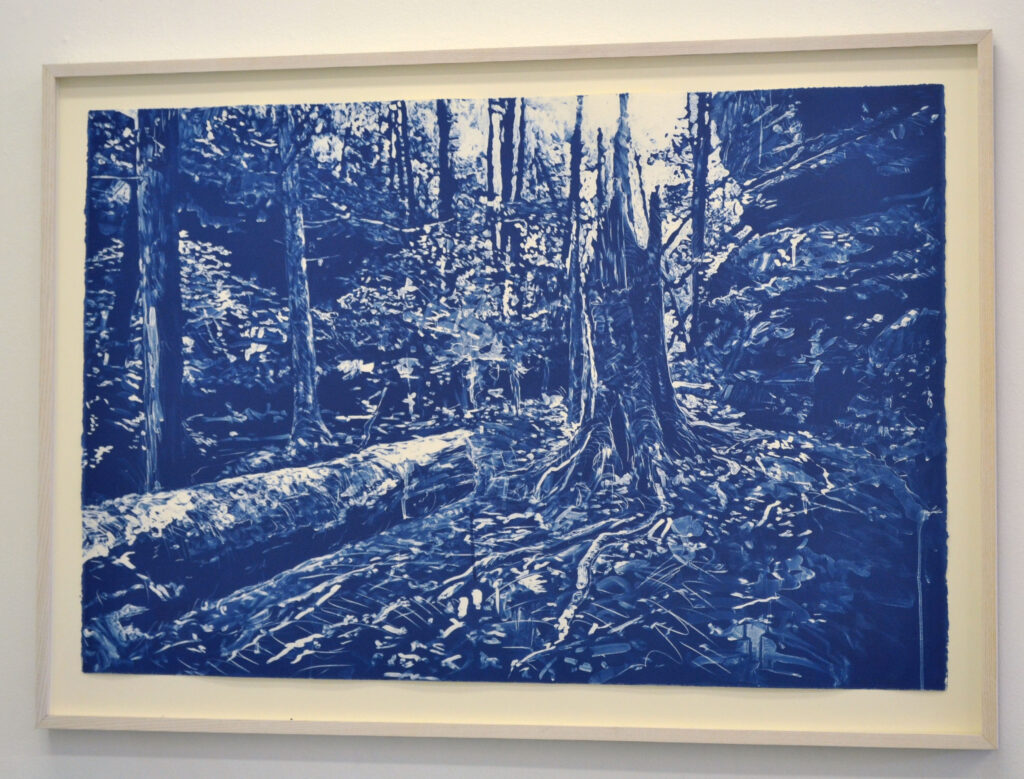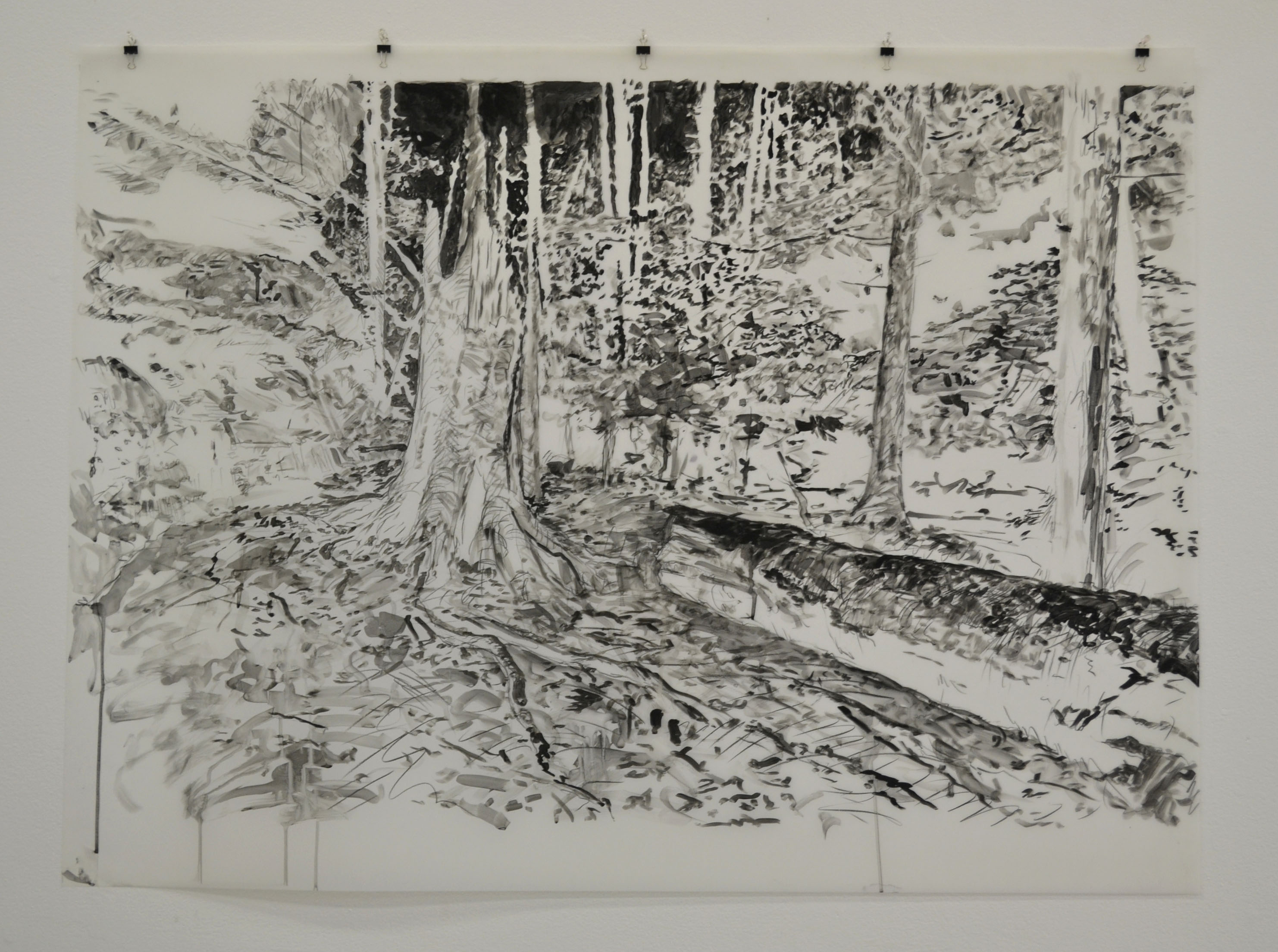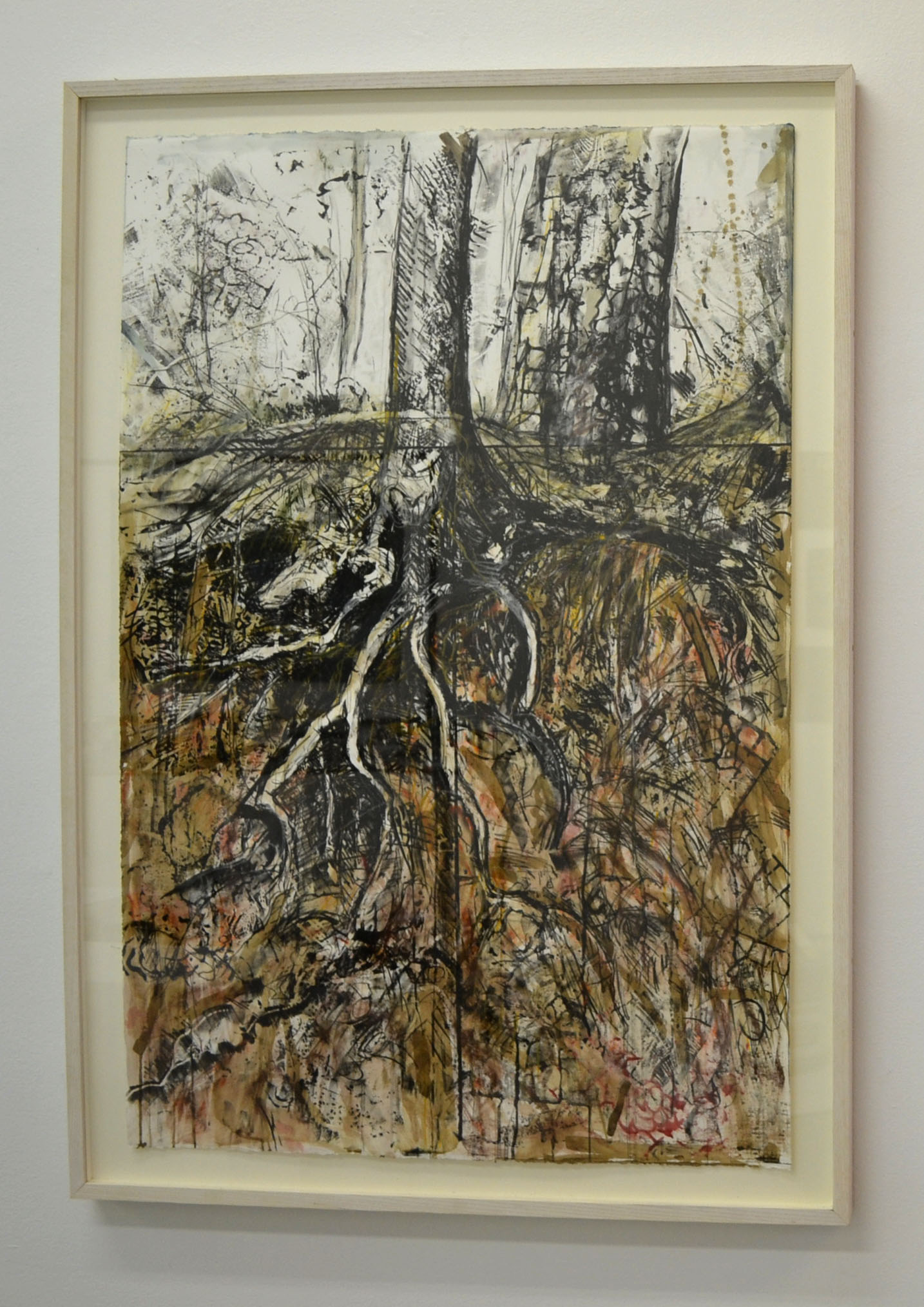Multiple Methods: A Print Exhibition
Despite the great Pictorialist’s admonishment in the late 19th century, many landscapes and other photographic subjects have been successfully printed in blue. The cyanotype, or blueprint, is an historic photographic process invented by Sir John Herschel. It takes advantage of the photosensitivity of metallic salts, but substitutes iron for the more commonly used silver.
Simple and long lasting, cyanotypes have enjoyed several periods of popularity, beginning with Anna Atkins’ use of the process in the 1840s to record botanicals by placing specimens in direct contact with sensitized paper, creating the characteristic white silhouettes on deep blue fields. Blueprinting, as it is commonly understood today, was first applied to making copies of architectural drawings in the 1870s. At the turn of the last century, many pictorialist photographers (ignoring the advice of their leader Emerson) used the process to strive for expressive effect in their work. Seventy years later, cyanotypes were one of the many “alternative processes” rediscovered in art departments and professional print studios across the nation.
The process uses stock solutions of potassium ferricyanide and ferric ammonium citrate that are mixed in equal parts and brushed onto fine paper and left to dry. Then, a photographic negative, an actual object, or a drawing on clear film is placed in contact with the emulsion and exposed to full spectrum light. Chemical reduction is evident during the exposure. Instead of using a developer the print is simply rinsed in running water to remove the non-reduced and still soluble ferric salts, leaving bright whites on a blue field that will oxidize to a deep Prussian blue on drying.
My work with the cyanotype process includes prints using photographic negatives and large scale prints of ink wash and toner drawings created on transparent Mylar. Stephens’s studio practice is with large-scale printmaking and historic photographic processes. His long-term involvement with big prints has led to the creation of large format printmaking facilities at the University of Montevallo that feature a 44 x 84″ Takach etching press.




